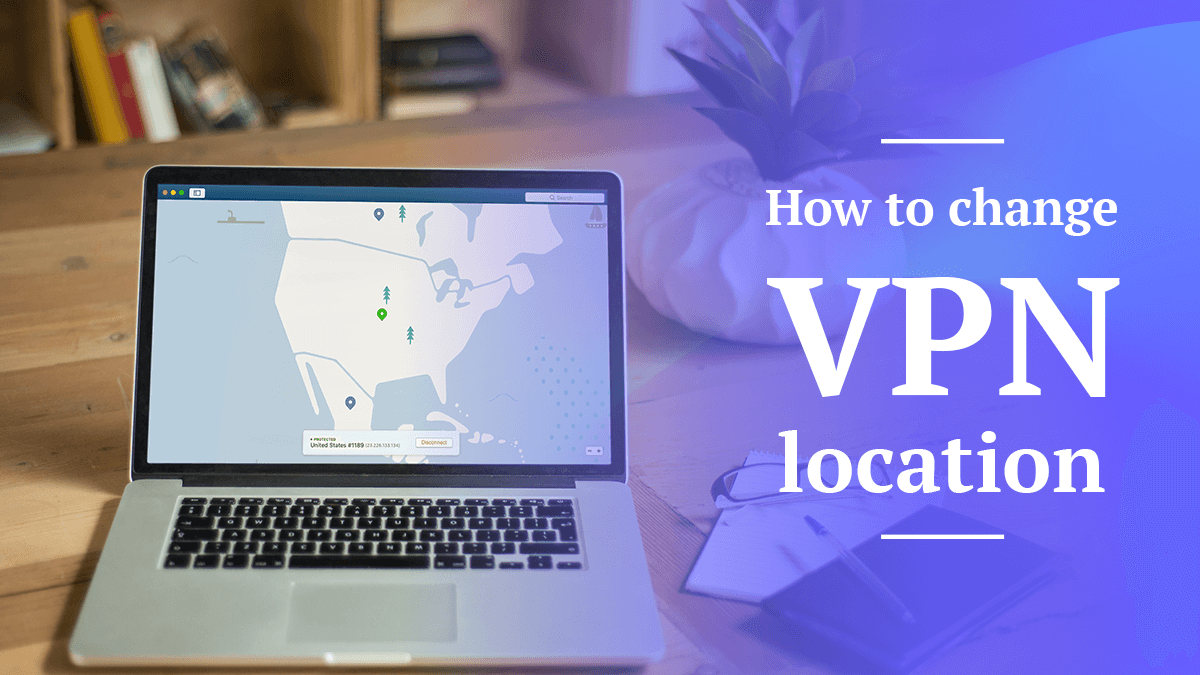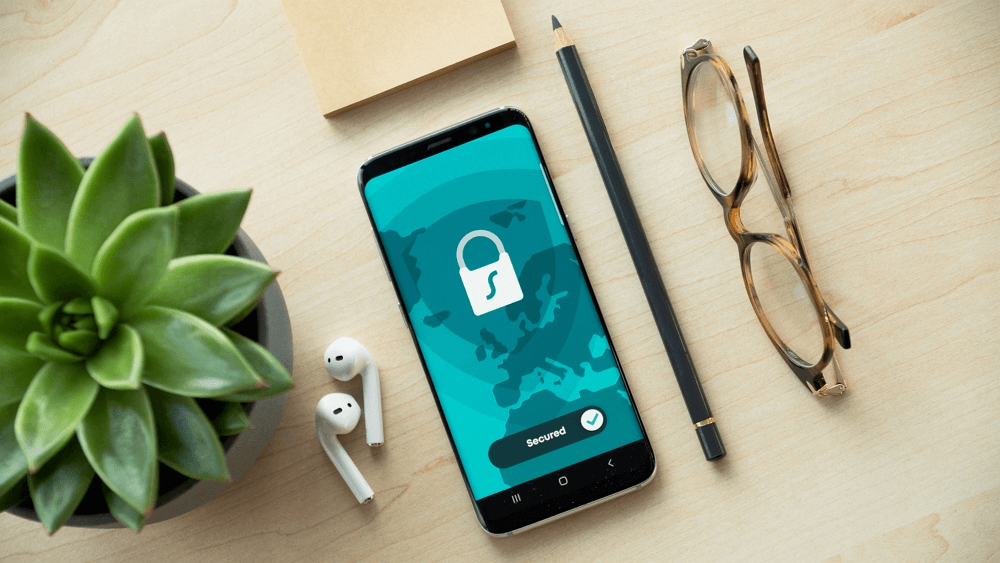
How to Change VPN Location in 2025: Change IP Address on iPhone, Android or Desktop
Quick Answer: How to change your VPN location
Pick a reliable VPN service, sign up, and download the app. Open it up and select any server in your desired location.
You can get started with my favorite, NordVPN, for free with its 30-day money-back guarantee.
Your IP address is the virtual equivalent of your real-world location, but if you know how to change VPN location options, you can mask your real IP address and access geo-restricted content.
A virtual private network (VPN) can hide your IP address and increase your privacy, security and anonymity on the web. Your VPN routes your internet traffic through encrypted servers so no one can see what you’re doing online — not even the websites you’re visiting or your internet service provider (ISP).
- Best to change your VPN location
While a VPN service cannot permanently change your IP address or provide you a new one, you can use a VPN to mask your IP address and physical location. Keep reading to find out how to temporarily nab a different IP address using a VPN.
How can I change my IP address location?
You can change your IP address location temporarily by using a VPN service. For permanent changes, you can reach out to your ISP.How can I change my IP address to another country for free?
You can use a free VPN like Windscribe, TunnelBear or ProtonVPN to temporarily use a virtual IP address from another country.
Is it legal to change your IP address?
Yes, it is legal to change your IP address, as it is within your rights to protect your privacy.Does a VPN change your IP address?
No, a VPN hides your real IP address by masking it with a new one. You cannot permanently change your location with a VPN.
How to Change Your VPN Location
You might want to use a VPN to change locations for many reasons. Maybe you want to bypass censorship or access region-locked content in different countries. Or maybe you just want to hide your location data and browsing activity.
VPNs allow you to change to different locations’ IP addresses by routing your connection through an encrypted tunnel to a VPN server in that location. Your unique IP address is hidden, and the VPN creates a virtual one instead that makes it appear as if you are browsing from there.
No matter the reason, setting up a VPN connection using its location services is straightforward. The process is similar no matter the VPN app or VPN service provider you choose.
Here are the steps to follow if you’re keen on masking your IP addresses:
- Pick a VPN
Do your research on the available VPN services, and pick a reliable one. See “the best VPNs for changing your IP location” at the bottom of this article if you need help. - Sign up for a plan
Get a VPN subscription. You can sign up for a free trial or take advantage of a money-back guarantee to test the one you choose. - Get the VPN app
Download the VPN app to your laptop or mobile device. - Log in to the VPN
Start the app and enter your account information to log in. - Pick a server location
Go through the server locations. Choose a server location and click connect.
And voila! Your public IP address will now be the VPN server’s IP address. Your location is protected.
Why Change Your VPN Location?
There are lots of reasons to change your VPN location. Some are for convenience, some for entertainment and others for more practical concerns that burn into your bank account.

Here are some reasons why people opt for a (temporarily) different IP address with a VPN.
1. Avoid censorship
Some countries censor their citizens’ online activity, blocking their ability to access certain sites. For example, China, North Korea and Russia have strict internet censorship. They block citizens from accessing common websites like YouTube and even social media platforms that are essential to daily life in the rest of the world.
The solution to this problem is a new IP address outside the restricted area. A VPN allows users to change their locations, essentially tricking the internet into believing they’re somewhere they’re not.
With a VPN, you can gain access to all the sites and resources that are blocked in certain countries — and do so anonymously. A reliable VPN encrypts the user’s data so it protects them so the ISP or government surveillance can’t see what they are doing, either.
2. Access geo-blocked content
Another common reason to change your VPN location is some websites block access based on the user’s location. If you’re traveling abroad, you might not be able to access certain Netflix shows or YouTube content because of licensing restrictions that vary from region to region.
For example, if you have a premium Netflix account and don’t want to miss your favorite shows while traveling abroad, changing to a new location can help you get around those blocks. If that sounds like something your fancy, check out the complete guide for the best VPN for Netflix.
Similarly, if you want to watch videos on YouTube that have been blocked in your country, changing locations can help circumvent this restriction. The same applies with other popular streaming platforms, like Amazon Prime Video and BBC iPlayer.
3. Get shopping deals
Changing your VPN location can save you money by helping you find the best deal when shopping online.
Geo-spoofing is an easy way to unlock shopping deals. By connecting to the shopping site through servers in several countries, you can look for better deals that might pop up elsewhere.
Many sites offer different prices to visitors from different countries, or even different regions within the same country. Once you learn how to change VPN location, you can hop around the globe and look for the best price.
How Does Your IP Address Reveal Your Location?
Your IP address is not as obvious as your driver’s license or other government-issued photo ID. It’s more like your virtual home address — it doesn’t tell people who you are, but it tells them where you are and what online activity is associated with your device.
When you connect to an internet site, your computer uses its IP address to contact a server somewhere else. The server then uses your IP address to send data back to you. When you visit a website, that site can see your IP address, and when someone sends you an email message, their mail server will have a record of your IP address, as well.
Your IP address can reveal more about you than you might think. It not only identifies the computer and network you’re using, but also the city and region in which the computer you’re using is located, showing the closest server of the ISP that provided the address.
What to Do If Changing Your VPN Location Doesn’t Work
If you have a VPN, but your IP address isn’t changing when you use different servers, it’s possible there is another problem.
One of the most common issues is an IP leak. This can occur when your device connects to a VPN server but doesn’t send all its network traffic through the encrypted tunnel.
It can also happen if your browser doesn’t support DNS leak protection, if the VPN is set up incorrectly on your device, or if the VPN is low quality.
If the VPN connection drops, you could become exposed to your ISP. It’s important that the VPN has a good kill switch, which will cut your internet connection completely until the VPN connection is reestablished.
Check for DNS or IP Leaks
To check if your VPN is leaking, take these three simple steps.
- Check your original IP address while the VPN is turned off.
- Turn on your VPN, connect to a server and check your IP again.
- Compare your original IP address with the virtual IP address shown. If they’re the same, you have a leak.
Block Trackers
Some websites may use cookies that track your location no matter what you do. These are persistent types of cookies that look at all kinds of information, not just your IP address.
For these, you’ll need to use a different app or software that can block trackers. For example, there will be features in antivirus software that enable tracker blocking. Mozilla Firefox comes with a Total Cookie blocking feature, too.
Other Things to Check
If your VPN location isn’t changing, here are things you can do:
- Make sure your browser isn’t leaking your geolocation. You might be unwittingly leaking your geolocation through your browser. You can change this in the settings by going to the “content” settings, then “location,” and enabling “do not allow any site to track your physical location.”
- Try another VPN server location. If there’s no IP leak, try connecting to another server. The location issue could be limited to one specific location or server.
- Try a different VPN protocol. The VPN protocol you’re using could be slowing you down if you haven’t chosen one compatible with your device. Try using IKEv2 or WireGuard, both of which are known for their speeds.
- Use a different VPN. Perhaps the VPN you’re using doesn’t have the best server network. Try switching to a different VPN with a proven record for a faster and more dependable server network, such as NordVPN.
Your most secure option is to find a VPN service you trust — one which has a reputation for doing its job well.
The Best VPNs For Changing Your IP Location
Speaking of secure options for VPNs, here are the top four you can use to change your IP address.
- NordVPN is a top VPN provider, with servers in over 60 countries. It is compatible with a wide range of desktop and mobile devices and offers advanced features, including double-hop servers. Read the full NordVPN review here.
- Surfshark is one of the best budget VPNs, especially if you opt for a long-term plan. It has servers in 65 countries. One of its perks is the unlimited number of simultaneous connections. It also has built-in ad blocking and malware filtering. Read the full Surfshark review here.
- ExpressVPN is the premium provider on the VPN market. It has servers in 105 countries and the fast and secure Lightway protocol. It’s also one of the best VPNs for accessing streaming platforms. Read the full ExpressVPN review here.
- Private Internet Access is another solid option, inexpensive and easy to use. PIA uses the WireGuard protocol, which is known for faster speeds. It also has a huge server network spread across 78 countries. Read the full PIA review here.
Change Your VPN Location For Free
If you’re looking for free VPNs, here are a few trustworthy options worth checking out:
- Windscribe’s free plan offers up to 10GB per month without charge. You get a selection of 10 server locations, though you can also add a server for $1 each with the build-a-plan option. Unfortunately its interface is clunky and cramped. Read the full Windscribe review here.
- Proton VPN offers great online privacy and an unlimited data allowance. However, paying users get priority over free accounts, so the speed drops during peak times and on crowded servers. The free plan offers access to five server locations, but you can’t choose which one you connect to. Read the full ProtonVPN review here.
- TunnelBear allows access to all the countries where it has servers (20 and counting) but limits monthly data to 500MB. You’ll burn through the monthly limit quite fast without paying. Read the full TunnelBear review here.
Conclusion
VPNs are the only reliable way to mask your IP address and encrypt your web traffic. ISPs like Verizon, AT&T and Comcast can track your browsing history and sell that data to third parties. It’s not just your ISP that can see what you’re up to, though. The government, hackers and other prying eyes can monitor what you do online if you’re not using a VPN.
Test NordVPN’s capabilities with a month-long return option, and secure long-term plans at reduced prices.
Which VPN do you think is the best for hiding your IP address? Do you prefer a free VPN or premium providers? Drop a comment and join the discussion!

Leave a Reply